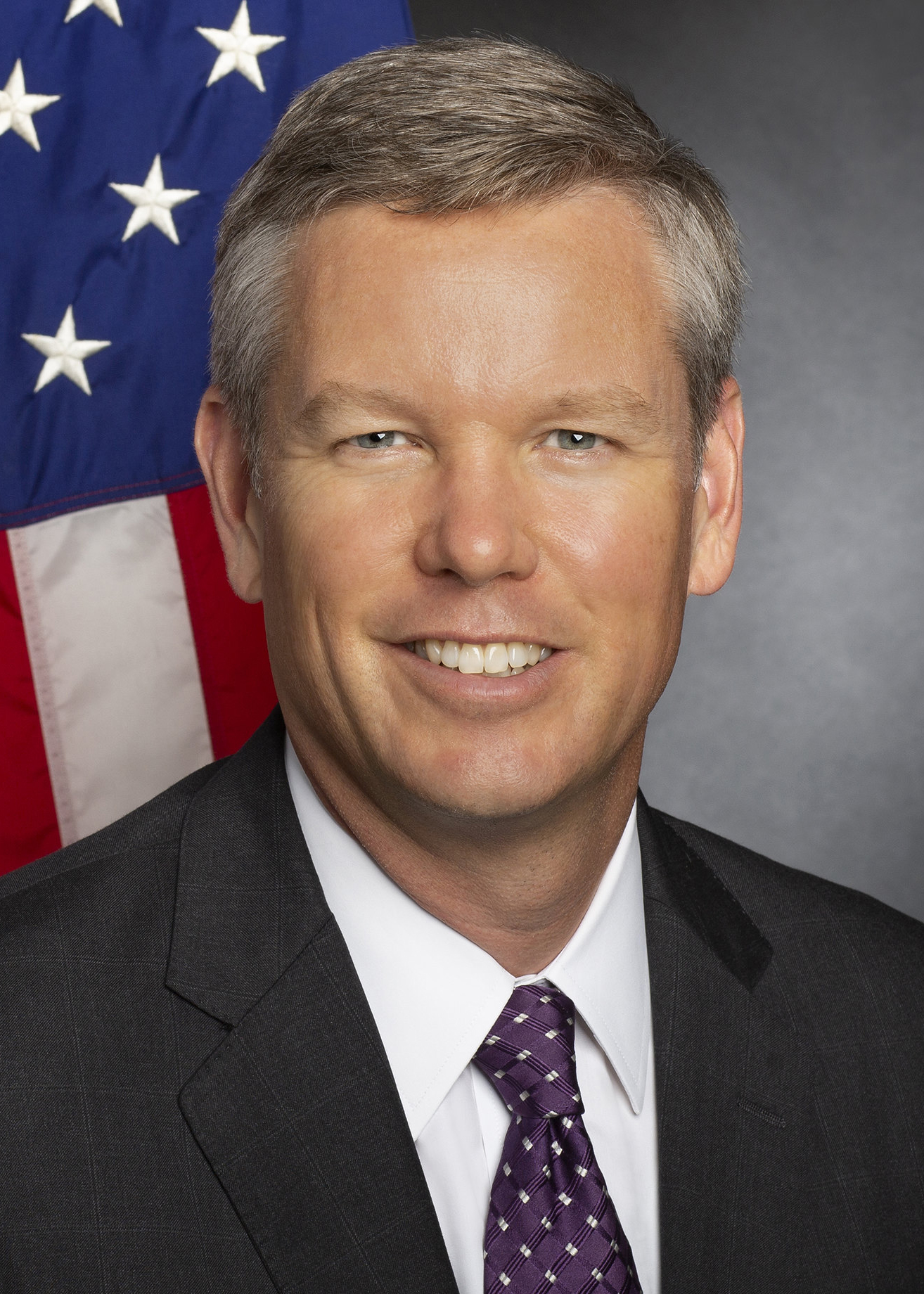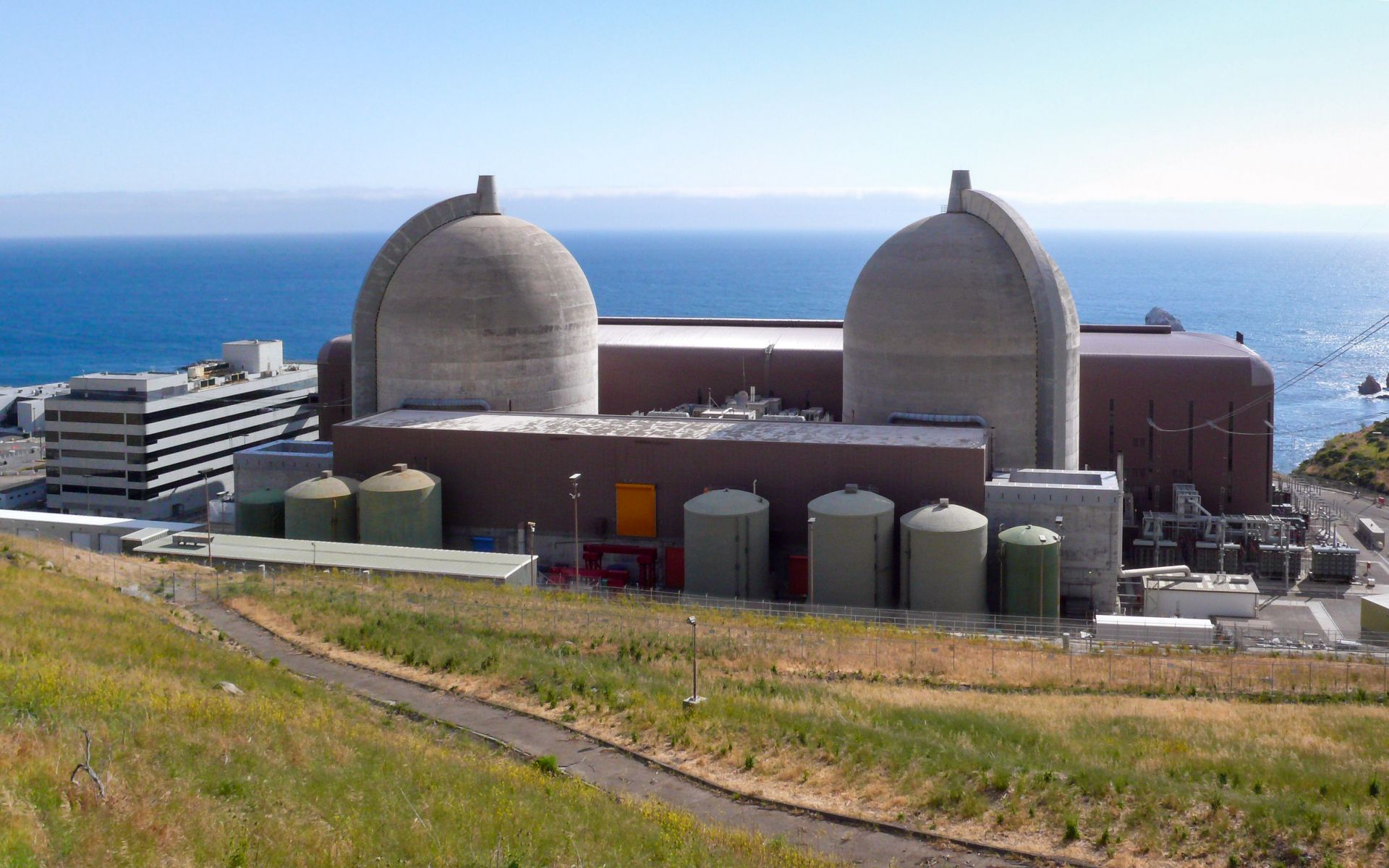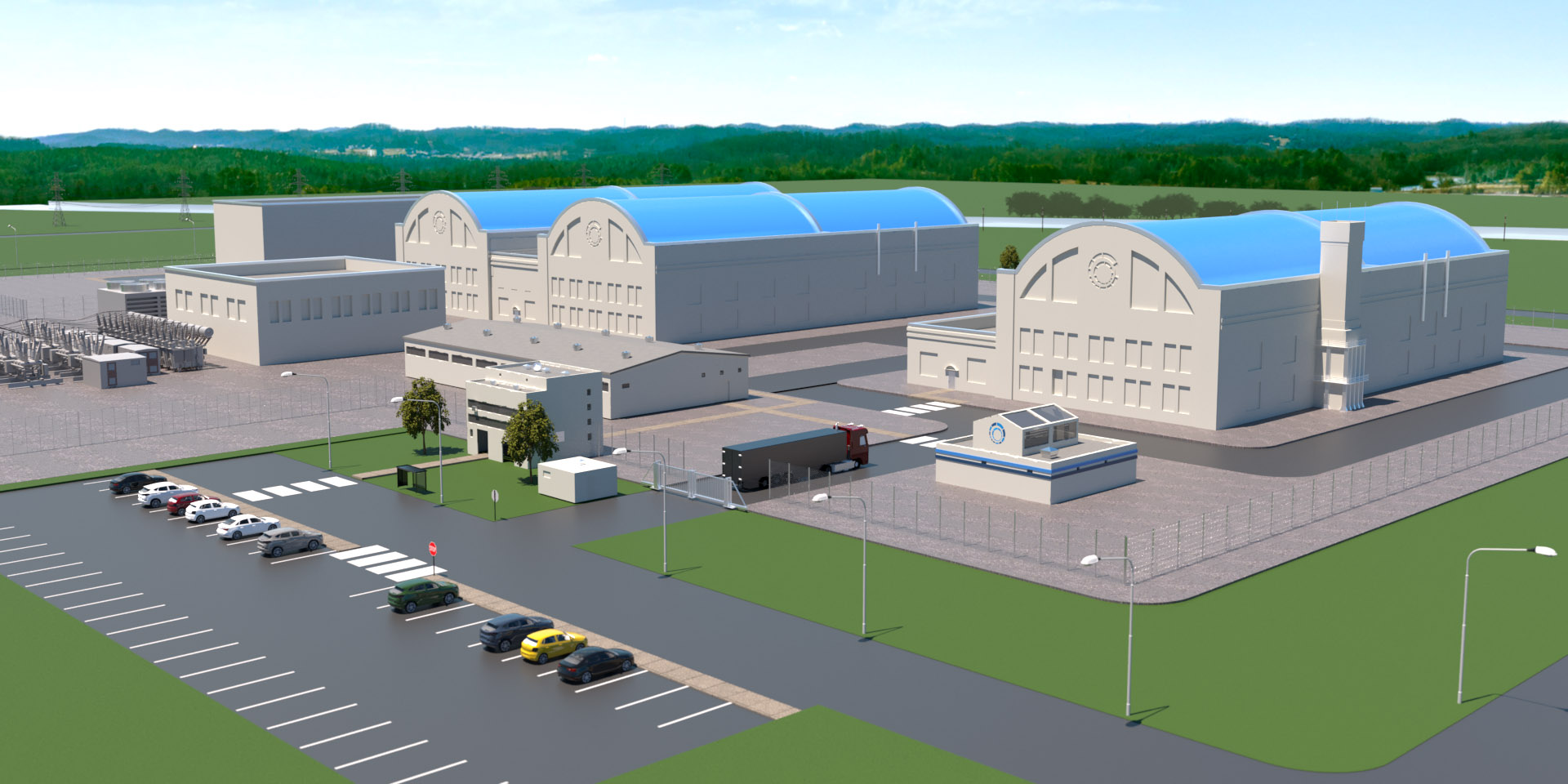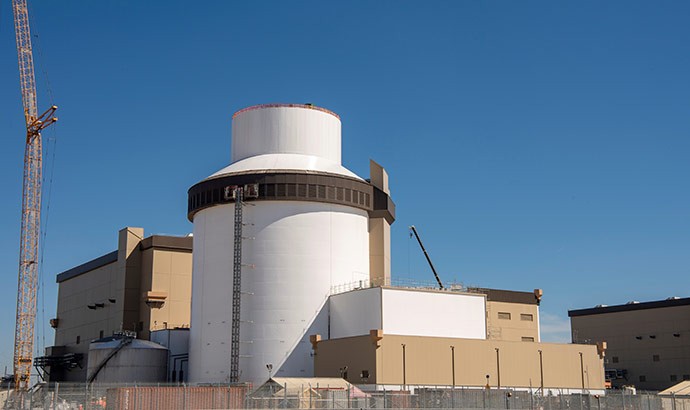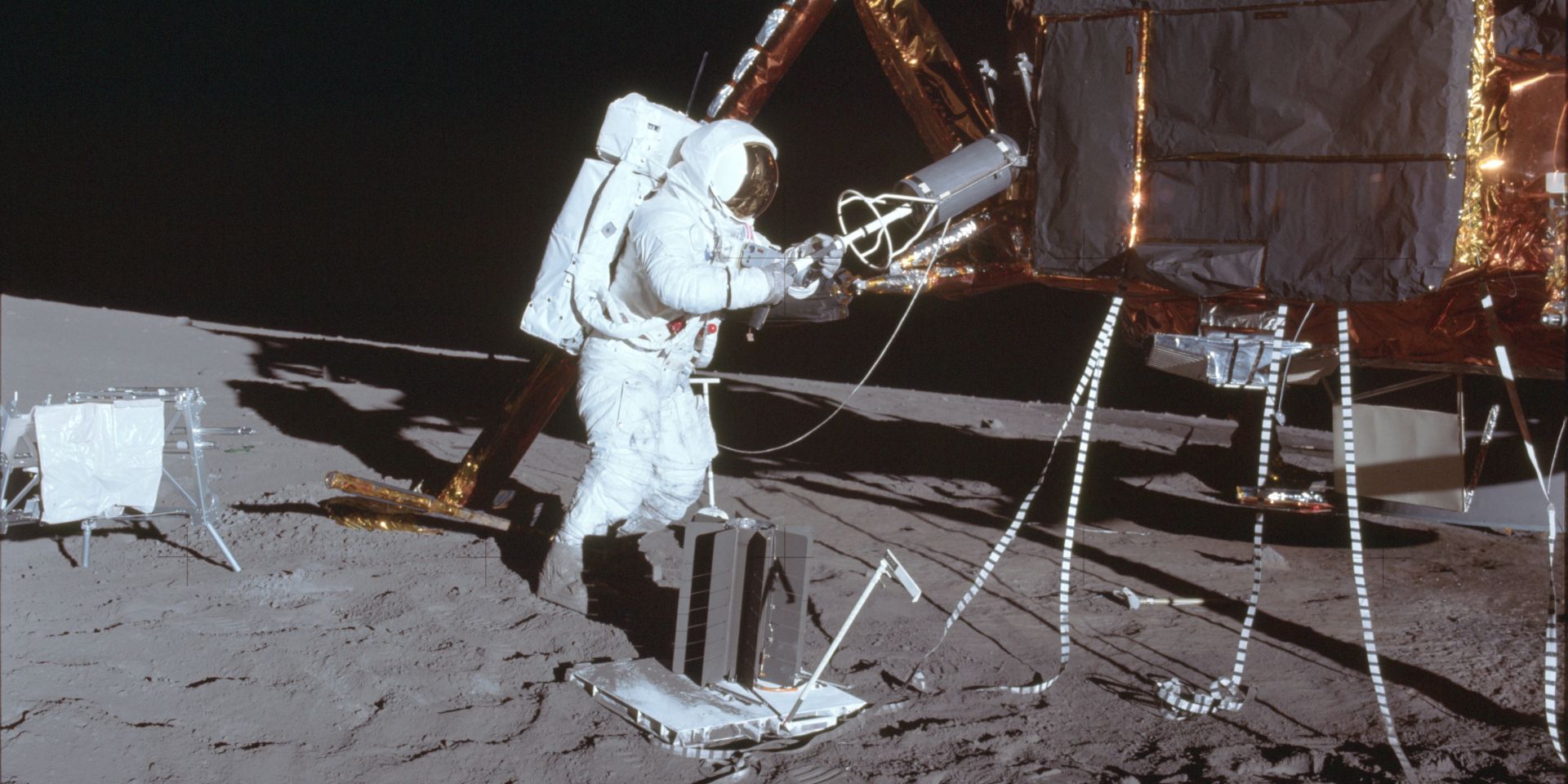ITER’s 10 cooling cells in the background have 11-meter-long 12-blade fans rotating at 92 rpm to induce an upward draft, which is reason for the yellow-vested assemblage in front to give a thumbs up. (Photo: ITER Organization)
Steam from one of ITER’s ten induced-draft cooling cells offers visual confirmation of a successful cooling system test, the ITER organization announced April 30. ITER’s cooling system features 60 kilometers of piping with pumps, filters, and heat exchangers that can pull water through at up to 14 cubic meters per second. Once fully operational, two cooling loops—one to remove the heat generated by the plasma in the ITER tokamak and one for its supporting infrastructure—will be capable of extracting up to 1,200 MW of heat.
Illustration by Ana Kova for U.S. Fusion Outreach
Fusion is riding a surge of attention that began in December 2022 when researchers at Lawrence Livermore National Laboratory’s National Ignition Facility achieved fusion ignition. The organizers of Fusion Energy Week—a group called the U.S. Fusion Outreach Team—on the other hand, trace fusion development back 100 years to the doctoral research of Cecilia Payne-Gaposchkin, who discovered that stars, including our Sun, are mostly made of hydrogen and helium, which in turn led to the understanding that those elements are the “fuel” of potential fusion energy systems on Earth. In recognition of Payne-Gaposchkin’s birthday—May 10—the U.S. Fusion Outreach Team plans to hold a “grassroots celebration of fusion energy” May 6–10, 2024, and annually during the second week of May.
(Or how to test a nuclear thermal rocket without turning it on)
Artist’s concept drawing of DRACO. (Image: DARPA)
The United States is now closer than it has been in over five decades to launching the first nuclear thermal rocket into space, thanks to DRACO—the Demonstration Rocket for Agile Cislunar Orbit.
ORNL’s High Flux Isotope Reactor, where Sr-89 and other radioisotopes are produced, photographed during a 2015 refueling. (Photo: ORNL)
The Department of Energy’s Isotope Program (DOE IP) announced last week that it would end its “active standby” capability for strontium-82 production about two decades after beginning production of the isotope for cardiac diagnostic imaging. The DOE IP is celebrating commercialization of the Sr-82 supply chain as “a success story for both industry and the DOE IP.” Now that the Sr-82 market is commercially viable, the DOE IP and its National Isotope Development Center can “reassign those dedicated radioisotope production capacities to other mission needs”—including Sr-89.
Energy Fuels’ White Mesa Mill in southeastern Utah is the only operating conventional uranium mill in the United States. (Photo: Energy Fuels)
The U.S. Senate approved April 30—by unanimous consent—a bill banning the importation of Russian uranium. The House of Representatives passed the bill, House Resolution 1042, last fall, and now President Biden is expected to sign it into law.
Diablo Canyon nuclear power plant. (Photo: PG&E)
A review from the Ninth Circuit Court of Appeals this week denied a challenge to the Diablo Canyon nuclear plant’s license renewal application extension granted by the federal government.
In late 2023, the Nuclear Regulatory Commission agreed to formally docket the California plant’s request to extend plant operations beyond the current license expiration dates of 2024 and 2025 for the two respective units.
Concept art for a Hermes plant. (Image: Kairos Power)
The Nuclear Regulatory Commission is seeking input on its draft environmental assessment and draft finding of no significant impact for Kairos Power’s application to build the Hermes 2 test reactor facility in Oak Ridge, Tenn.
Vogtle's Unit 4 achieves a milestone. (Photo: Georgia Power)
Unit 4 at Georgia Power’s Plant Vogtle has entered commercial operation, the company announced today. The new unit can produce enough electricity to power an estimated 500,000 homes and businesses, according to the company.
Concept art of Framatome's expansion of its Mill Ridge Road facility in Lynchburg, Va. (Image: Framatome)
An official groundbreaking last week at Framatome’s Mill Ridge Road facility, in Lynchburg, Va., marks the start of a $50 million expansion and an eventual addition of 500 employees, according to the nuclear company.
April 26, 2024, 3:03PMNuclear NewsAlex Gilbert, Harsh S. Desai, and Jake Matthews Astronaut Alan Bean prepares fueling of a Pu-238 radioisotope thermoelectric generator during the Apollo 12 mission to the lunar surface. (Photo: NASA)
In early 2006, a start-up company launched a small rocket from a tiny island in the Pacific. It exploded, showering the island with debris. A year later, a second launch attempt sent a rocket to space but failed to make orbit, burning up in the atmosphere. Another year brought a third attempt—and a third failure. The following month, in September 2008, the company used the last of its funds to launch a fourth rocket. It reached orbit, making history as the first privately funded liquid-fueled rocket to do so.











